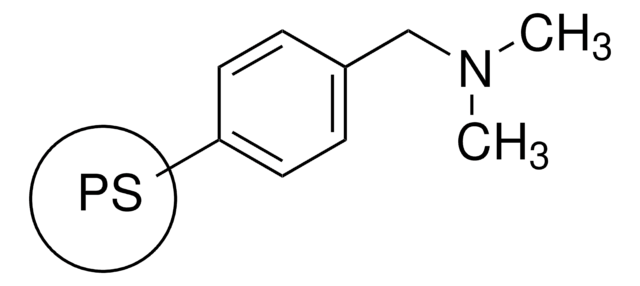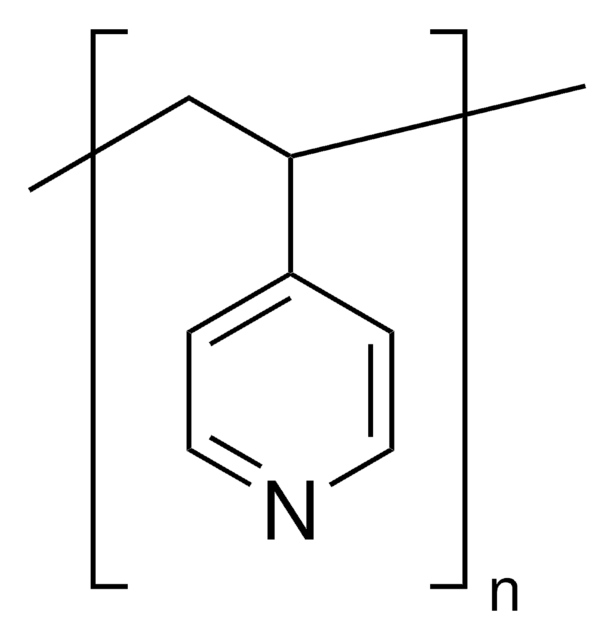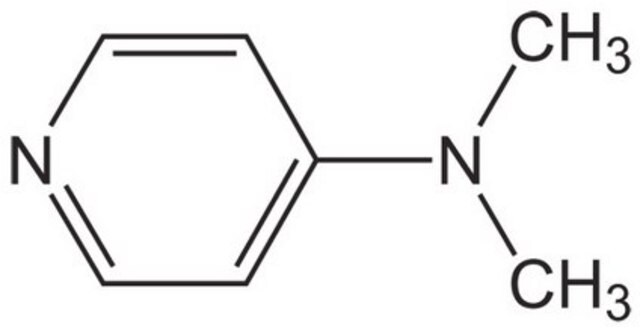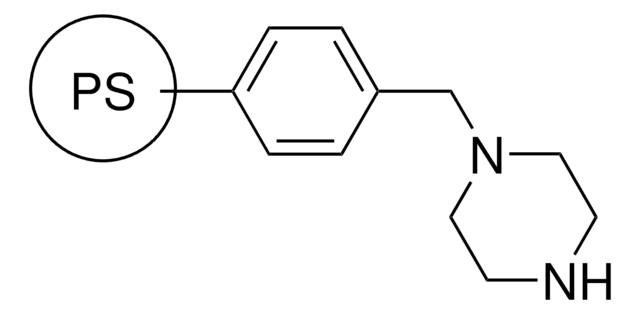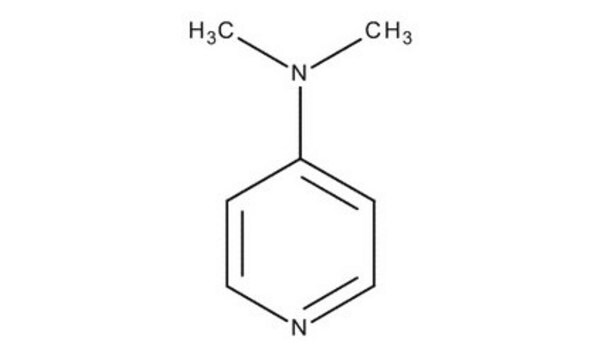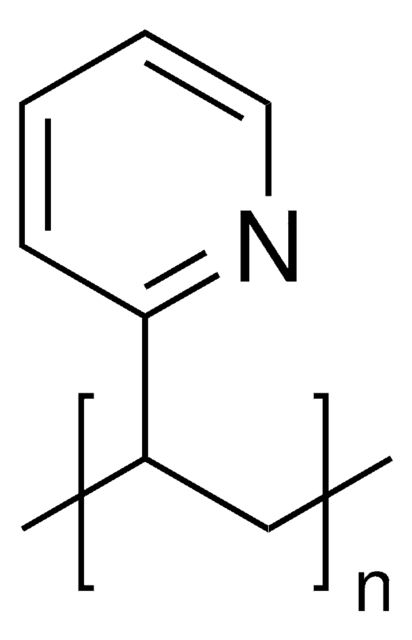39410
4-(Dimethylamino)pyridine, polymer-bound
extent of labeling: ~3.0 mmol/g "DMAP" loading, matrix crosslinked with 2% DVB
동의어(들):
4-(Dimethylamino)pyridine on Polystyrene, DMAP on PS, polymer bound DMAP
로그인조직 및 계약 가격 보기
모든 사진(2)
About This Item
실험식(Hill 표기법):
C8H8
CAS Number:
Molecular Weight:
104.15
MDL number:
UNSPSC 코드:
12352128
PubChem Substance ID:
NACRES:
NA.22
추천 제품
반응 적합성
reaction type: solution phase peptide synthesis
라벨링 범위
~3.0 mmol/g "DMAP" loading
Matrix
crosslinked with 2% DVB
음이온 미량물
chloride (Cl-): ≤5000 mg/kg
유사한 제품을 찾으십니까? 방문 제품 비교 안내
일반 설명
Polymer-bound 4-(dimethylamino)pyridine is used for improved derivatization of chiral and achiral aliphatic amines, amino alcohols and amino acids.
애플리케이션
Polymer-bound 4-(dimethylamino)pyridine is used as a supported base in the Michael addition and nitrous acid elimination process step involved in the synthesis of thiophene-2-carboxylates using β-nitroacrylates as starting materials, under a general and efficient continuous flow-based protocol. It also serves as a supported catalyst in the preparation of ω-nitro esters starting from cyclic 2-nitro ketones under solid heterogeneous catalysis.(5)
기타 정보
Polymer supported, recyclable acylation catalyst
신호어
Warning
유해 및 위험 성명서
예방조치 성명서
Hazard Classifications
Eye Irrit. 2 - Skin Irrit. 2 - STOT SE 3
표적 기관
Respiratory system
Storage Class Code
11 - Combustible Solids
WGK
WGK 3
Flash Point (°F)
Not applicable
Flash Point (°C)
Not applicable
개인 보호 장비
Eyeshields, Gloves, type N95 (US)
가장 최신 버전 중 하나를 선택하세요:
이미 열람한 고객
$\beta$-Nitroacrylates as Starting Materials of Thiophene-2-Carboxylates Under Continuous Flow Conditions
Chiurchiu E, et al.
Advanced Synthesis & Catalysis, 361(9), 2042-2047 (2019)
$\beta$-Nitroacrylates as Starting Materials of Thiophene-2-Carboxylates Under Continuous Flow Conditions
Chiurchiu E, et al.
advanced synthesis and catalysis, 361(9), 2042-2047 (2019)
M. Tomoi et al.
Macromol. Chem. Rapid Commun., 3, 537-537 (1982)
Szu-Yuan Chou et al.
Scientific reports, 10(1), 18519-18519 (2020-10-30)
Cell development and behavior are driven by internal genetic programming, but the external microenvironment is increasingly recognized as a significant factor in cell differentiation, migration, and in the case of cancer, metastatic progression. Yet it remains unclear how the microenvironment
S. Shinkai et al.
Bulletin of the Chemical Society of Japan, 54, 631-631 (1981)
자사의 과학자팀은 생명 과학, 재료 과학, 화학 합성, 크로마토그래피, 분석 및 기타 많은 영역을 포함한 모든 과학 분야에 경험이 있습니다..
고객지원팀으로 연락바랍니다.
